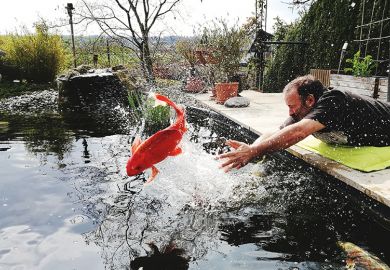Student numbers at some of the largest private higher education colleges have fallen by about a fifth, according to the latest data.
Figures published by the Higher Education Statistics Agency show that four institutions, including BPP University, had a drop in enrolments of more than 18 per cent last year.
But according to the data, other alternative providers recorded significant expansion in 2016-17, among them the British and Irish Modern Music Institute (BIMM).
BIMM is now the second biggest alternative provider in terms of the number of students on “designated” courses where public loans can be used to pay fees, overtaking BPP. Times Higher Education reported in January that BIMM was the biggest recipient of Student Loans Company funding of any private provider in 2016-17.
Overall, there was a 1 per cent rise in the number of full-time undergraduates enrolled on designated courses, while 5 per cent more students were taking their first degree with an alternative provider than in 2015-16.
Of private colleges enrolling at least 500 full-time students in 2016-17, those with the largest falls in students on designated courses were St Patrick’s International College (down 24.6 per cent on 2015-16), SAE Education (down 22.3 per cent), BPP University (down 18.9 per cent) and ICON College of Technology and Management (down 18.3 per cent).
Meanwhile, full-time enrolments at four alternative providers increased by more than a third: Mont Rose College of Management and Sciences (up 48.7 per cent), the University of Law (up 39.1 per cent), the University College of Estate Management (up 38.2 per cent) and the Academy of Contemporary Music (36.8 per cent).
GSM London, which like BIMM is owned by the private equity firm Sovereign Capital, remains the biggest alternative provider for designated courses, with 6,770 full-time students in 2016-17, down 1.1 per cent on 2015-16.
Across the sector, the largest falls in undergraduate numbers were on sub-degree Higher National Diploma and Higher National Certificate courses, whose provision among private colleges has been the subject of intense scrutiny in recent years over dropout rates. Full-time student numbers on HNC and HND courses fell 12 per cent in the year to 2016-17 and 14 per cent for those in their first year.
Last year, the Hesa figures suggested that there was a difference of almost 3,000 students between those in the latter stages of a higher national course and those who had achieved a qualification, raising questions about dropout rates. The latest data suggest that this gap had fallen to just over 1,000 students in 2016-17.
Alexander Proudfoot, chief executive of Independent Higher Education, the representative body for a number of alternative providers, said that the decline in higher national students reflected the government’s 2014 “moratorium” on new courses being designated.
He said that this “has led many providers to work in partnership with further education colleges to deliver these courses. Some of them have experienced strong growth in this area, but this has not been captured in the AP statistics.”
Find out more about THE DataPoints
THE DataPoints is designed with the forward-looking and growth-minded institution in view
Register to continue
Why register?
- Registration is free and only takes a moment
- Once registered, you can read 3 articles a month
- Sign up for our newsletter
Subscribe
Or subscribe for unlimited access to:
- Unlimited access to news, views, insights & reviews
- Digital editions
- Digital access to THE’s university and college rankings analysis
Already registered or a current subscriber?




